Ray’s 2014 E3 Report Part Deux!
In the second of several installments, Ray plays pinball, fights nasties to the strains of classical music, engages in brutal combat amid pastoral and urban beauty, checks out a JRPG and plays Final Fantasy characters while listening to Final Fantasy music
Coolest Weird Idea: Rollers of the Realm
I spied the next one of Top Five Best in Show titles during my first ten minutes on the show floor. My first appointment was at Atlus, where I was supposed to look at a little RPG called Citizens of Earth (more on that later).
Next to Citizens of Earth was a crazy title that pretty much made my head explode with delight. It’s called Rollers of the Realm.
So. Remember how in 2007 Infinite Interactive really shook things up with their game Puzzle Quest? It was an RPG / Bejeweled hybrid. On paper, that may have sounded ridiculous.1 But the game was absolutely delightful to play, and sold many, many copies.
Well now Ontario-based Phantom Compass is welding the RPG model to another unlikely genre: The pinball game.
Yes, that’s not a misprint. Rollers of the Realm is a pinball RPG.
And it’s AWESOME. There are ten different classes/characters that you get to play (each represented by a different type of ball), and they each have different abilities. The screen looks like a cross between a classic high fantasy location and, well, a pinball board.
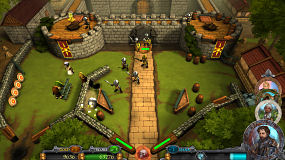 |
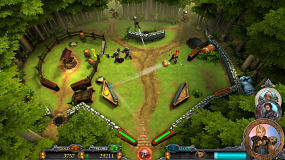 |
How do you attack enemies? You guessed it: Hit them with the ball! Also included in the gameplay are physics puzzles based on those old games where you tilt a surface to carefully roll a ball through a maze. You remember those.
The game features over 30 boards, quests, and even boss battles!
I couldn’t stop playing this game and can’t wait until I can get my hands on the real version.
Rollers of the Realm
PS 4, PS Vita, Steam (PC)
Holiday 2014
Bethesda Gets Evil and Multiplayer
E3 stalwart Bethesda games was previewing two big new games this year.
The first was The Evil Within, billed as Shinji Mikami’s return to the roots of the Survival Horror genre he pioneered with the original Resident Evil way back in 1996. In recent years, the genre has moved more towards run-and-gun game mechanics, and Mikami wants to take it back to its low-ammo, run-away-when-you-can core gameplay.
The look of the game is deliberately grainy, making it look like a creepy old movie. Besides this very effective visual choice, the first thing I noticed was that the music playing during the beginning of the demo was “Claire de Lune.” You don’t really hear that much Debussy while playing video games, and if the goal was to get my attention, it certainly worked. Its peaceful, lyrical strains also provided an eerie counterpart to the lurking dread the game was generating with its visuals.
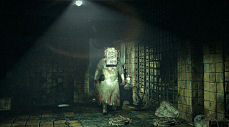 |
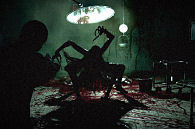 |
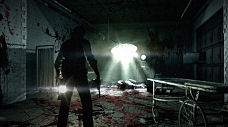 |
As you explore the Creepy Old Mansion near the beginning of the game, it’s important to remember a few rules:
- Melee attacks ONLY slow the ghouls down. You can’t kill them that way.
- When you kill them with a weapon… they don’t necessarily stay dead, unless you burn them. Nice.
- Sometimes it’s best to just OMFG RUN!!!
Other than Resident Evil 4, I’m not that big on Survival Horror, but I may have to check out this well-crafted, intriguing title.
The Evil Within
8/24/15
Xbox 360, PS3, PC, PS4, XBox One
Bethesda’s other big game was Battlecry. It’s a 32-player team combat game set in a compelling new universe. It’s an alternate 20th Century that’s billed as “a world without gunpowder.” Naturally, this will affect your weapons and fighting style.
The goal of the designers of the game (the recently-formed Battlecry Studios) is to create a game that’s fast, frenetic, and easy to jump into.
Dissonance seems to be a theme in Bethesda games this year. In The Evil Within, this was expressed by the “inappropriate” music. In Battlecry, it’s in the pastoral and urban beauty of the environments, which contrast mightily with the brutality of the combat.
The graphics have a painterly style and the environments are highly stylized. AND extremely cool looking, which makes sense, since they hired the talented designer Viktor Antonov (designer of City 17 in Half-Life 2 and the whale-oil based steampunk city of Dunwall in Dishonored).
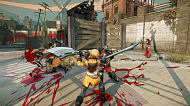 |
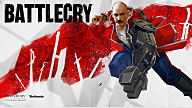 |
 |
In Battlecry, you get to play one of several colorful classes. There’s the Enforcer (big melee dude), Duelist (basically a rogue), Tech Archer (pretty much what it sounds like), Gadgeteer (support class and the class with the most fun name), and the Brawler (in intimidating guy with a mechanical arm).
Also, you are able to switch out character classes on the fly in mid-combat, which sounds pretty impressive.
One cute feature of the game is a sort of “good sport” moment that happens after each match. The game is set up so that you can congratulate your opponents on a well-fought game. I’ll be curious to see how that ends up being used.
While I certainly wish the developers of this ambitious game well, I can’t help but remembering that just three years ago Bethesda released another big expensive multiplayer team based combat game (Brink) which, despite a LOT of hype, didn’t make much of a splash. We’ll see if Battlecry Studios can do better for Mothership Bethesda than Splash Damage did with Brink.
BattleCry
2015
PC
A Tricky-to-Pronounce JRPG Sequel
I have Tales of Xillia sitting on my game stack, and I plan to play it soon. I need to hurry, because Bandai Namco is preparing its sequel, Tales of Xillia 2.
Now, how would YOU pronounce the name of this game? I’m a stickler for “X” being pronounced as a “Z” when it’s the first letter of a word in English. So I would say “Tales of Zillia.” You know, like Xenogears (pronounced “Zenogears”). But the guy doing the demo insisted on pronouncing it “Tales of Exillia.” It’s his game, not mine, of course, but I was still left scratching my head.
Even though this is an actual sequel to the first game, its setting it completely different. The first game took place in a high fantasy setting, while the new game is more Industrial Noir.
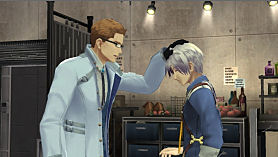 |
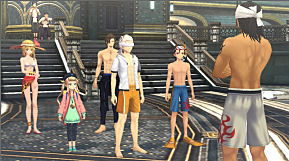 |
There are two main characters: A twenty-year old young man and an eight year old girl. Ugh. This may not be the time to get into it but WHAT IS IT with Japanese RPGs and their pre-adolescent characters? These are not children’s games, and the stories deal with very adult situations. I love many JRPGs, but these infantile characters can get downright creepy. What does it say about the Japanese gaming public that they can only seem to relate to main characters who are less than a decade old? I do not understand it.
Anyway, like all good JRPGs, Tales of Xillia 2 has a complicated battle system with a catchy name: In this case, it’s called the Double Raid Linea Motion Battle System. I’m not kidding. You might want to write that down.
It does sound fun, though. Your twenty-year old (name of Ludger Resnik) has three weapons: dual swords (short range), a sledgehammer (mid range) and a gun (long range). He can change weapons on the fly depending on what the situation calls for. He can also infrequently use a special power attack.
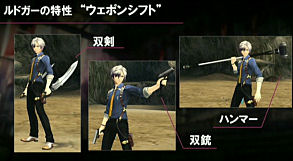 |
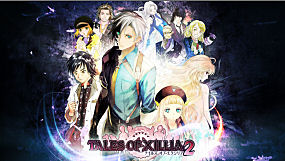 |
Early in the game, Ludger saves the little girl and in doing so, ends up deep in financial debt. He has to pay off this debt, and as he does, the game world begins to open up for the player. You help Ludger make money by random battles, selling items, and questing.
A feature that will surely please fans of the original game is the inclusion of “Character Chapters.” These are extensive, though completely optional, questlines involving characters from the original game. Sounds like a fun way to level up to me.
If I can get over the 8-year-old girl problem, Tales of Xillia appears to be a big serving of crunchy, chewy JRPG goodness that I’ll probably want to try.
Final Fantasy fan service: Theatrythm: Curtain Call
Considering the amazing library of music the Final Fantasy series has produced, it’s no surprise that, eventually, Square Enix would want to leverage those assets into a rhythm game. They did that in 2012’s awkwardly titled Theatrhythm: Final Fantasy. The game was successful enough that a sequel is in the works: Theatrhythm: Curtain Call.
Like the first game, it’s for the 3DS, and it brings over 200 tracks from the vast roster of Final Fantasy games (including the Tactics games and the recently revamped MMORPG Final Fantasy IV: A Realm Reborn).
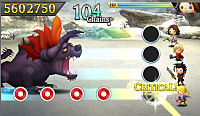 |
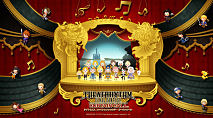 |
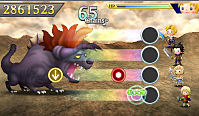 |
If you’ve ever had any affection for this music (and I’m raising my hand here), you may well find this game irresistible. It’s pretty straightforward: some symbols require taps, some holds, some movements. As you lay, you quickly get better – I improved in just a few minutes of hogging the display 3DS as the Square Enix area of the show floor.
The gameplay consists of three different modes: Field Stages (one character), Battle songs (teams) and Event Stages (full motion video). This time around, there’s also a Versus multiplayer mode.
You’ll also be able to play about 60 Final Fantasy characters.
For JRPG dweebs like me, this one is another no-brainer. Must have.
Theatrythm: Curtain Call
9/16/2014
Nintendo 3DS
1 Almost, but not quite, as ridiculous as “Final Fantasy Meets Classic Disney Characters, and we all know how THAT turned out.

Leave a Reply